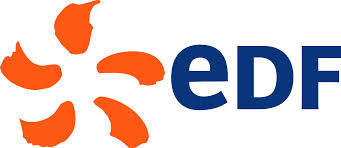- Institute
- Research topics
- Organization
- Platforms
- Services
- Europe/International
- Science outreach
- Agenda
- Directory
- Access


Leader : Yvan Canitrot
All the DNA transactions such as transcription, replication and DNA repair occur in a chromatin context. A large number of modifications can specifically change the chromatin structure by modifying the nucleosome composition or its positioning together with the post-translational modifications of histones (acetylation, phosphorylation...). We are interested in studying the mechanisms influencing DNA repair and genetic instability. We focus on the role of chromatin and its associated factors on the repair of DNA double strand breaks. We are particularly interested in a chromatin remodeling complex, Tip60, presenting several enzymatic activities such as acetylation (Tip60) and histone chaperone via the p400 ATPase. In previous works we demonstrated that members of the complex (Tip60 and p400) influenced the DNA damage response and could control directly and indirectly some DNA repair pathways (Chailleux et al 2010, Courilleau et al 2012, Taty-Taty et al. 2015).

We recently enlarged our interest to the histone demethylase family and we examine their involvement in DNA damage response. By using complementary approaches such as fluorescence microscopy (high throughput fluorescence microscopy, FRET-FLIM... ), chromatin immunoprecipitation, GFP reporter substrates specific of the different DNA repair pathways but also genetic manipulations by creating knock out and knock down cell lines we dissect the choreography of the response to DNA damage (according to the different type of DNA damage). We are trying to understand the influence of the different chromatin modifications on the choice and the activity of the DNA repair pathway used. In addition of the understanding of the fundamental mechanisms controlling DNA repair in human cells the ultimate goal of these works is to propose new therapeutic targets in order to improve the efficiency of treatments using DNA targeting drugs.
Figure : Chromosome spreading showing "crossing-over" between sister chromatids
Publications on thematic (the team's members are highlighted in bold) :
* Taty-Taty GC, Chailleux C, Quaranta M, So AY, Guirouilh-Barbat J, Lopez BS, Bertrand P, Trouche D, Canitrot Y. Control of alternative end joining by the chromatin remodeler p400 ATPase. Nucleic Acids Research (in press)
* Gelot C, Guirouilh-Barbat J, Le Guen T, Dardillac E, Chailleux C, Canitrot Y, Lopez BS. The cohesin complex prevents the end-joining of distant DNA double-strand ends. Molecular Cell (in press)
* Chailleux C, Aymard F, Caron P, Daburon V, Courilleau C, Canitrot Y, Legube G, Trouche D. Quantifying DNA double strand breaks induced by site-specific endonucleases in living cells. Nature Protocols 9(3): 517-528 (2014)
* Taty-Taty G, Courilleau C, Quaranta M, Carayon A, Chailleux C, Aymard F, Trouche D, Canitrot Y. H2A.Z depletion impairs proliferation and viability but not DNA double strand breaks repair in human immortalized and tumoral cell lines. Cell Cycle 13(3): 399-407 (2014).
News & Views in Cell Cycle 13(7):1059 (2014)
* Lai Z, Moravcová S, Canitrot Y, Andrzejewski LP, Walshe DM, Rea S. Msl2 is a novel component in the DNA damage response in vertebrate cells. PLoS ONE 8(7): e68549 (2013)
* Courilleau C, Chailleux C, Jauneau A, Briois S, Grimal F, Boutet-Robinet E, Boudsocq F, Trouche D, Canitrot Y. The chromatin remodeler p400 ATPase facilitates Rad51 mediated repair of DNA double-strand breaks. Journal of Cell Biology 199(7): 1067-1081 (2012).
Highlighted in J. Cell. Biol. Biobytes http://jcb.rupress.org/site/biobytes/biobytes_jan_07_2013.mp3
Financial supports :







